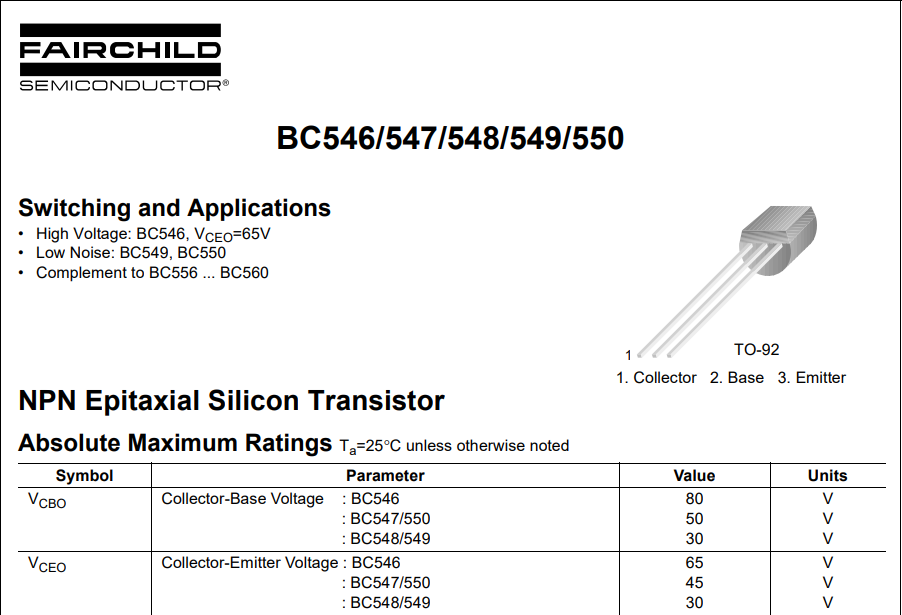

So you can see that it starts to heat up well even before reaching this limit, already at 60 mA. For the bc547 it should not be more than 100mA, because this value will be the breakdown limit, above which the device will surely burn out.
I C (max) is the maximum collector current that can be applied across the collector-emitter pins. For example, the BC547 is not capable of holding more than 45 volts, so this value is listed as the safe operating voltage to be applied to the collector load. V CEO -shows the maximum potential difference that can be applied between the collector-emitter contacts. The maximum allowable operating parameters are stated by the manufacturer at the beginning of the datasheet. It usually includes a table of maximum allowable operating parameters and electrical specs, at which the device is stable. During their testing process just before release, based on VBCO and VCEO measurements and noise components, they are classified as -7, -8 or -9.Ī detailed description can be found in the manufacturer’s datasheet. Group “A” will have the smallest gain and “C” will have the largest gain.īc547, bc548, bc549 are the same transistors built on the same production line. Also, all types of devices are divided into groups of maximum current amplification factor hFE- from A to C. For example, bc547 differs in the threshold voltages and is in the table of maximum parameters between bc546 and bc548. The datasheet for bc547 usually includes a description of similar, in terms of specifications, transistors of the series: BC546, BC548, BC549 and BC550. The figure shows the basic appearance of the device, which will vary slightly depending on the particular brand, but the specs and pin assignments remain identical. Looking at the bevel from the front, the purpose of these pins is from left to right: collector, base, emitter. The BC547 pinout will be discussed in the TO-92 (TO-226AA) package, which has three flexible leads for hole mounting. 
It is currently the current replacement for the older BC107 or BC147, which are included in many developments by Mullard and Philips.

It was identical in its technical specifications, but was produced unlike the metal bc107 in a plastic sealed housing TO-92. It was a joint development of the then popular bc107. Bc547 first appeared on the market in April 1966, courtesy of Philips (Holland) and Mullard (UK).






 0 kommentar(er)
0 kommentar(er)
